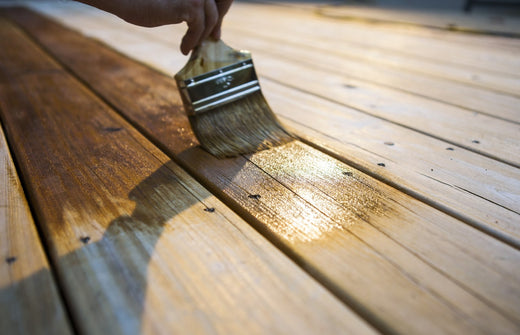A summer house is a wonderful addition to any garden, offering a peaceful retreat, a hobby space, or even a home office. But to truly enjoy it all year round, summer house insulation is essential. Proper insulation can keep your summer house warm in the winter and cool in the summer, and reduce energy costs by maintaining a comfortable temperature. Whether you're looking to add some basic insulation or transform your summer house into a cosy sanctuary, knowing the best materials and methods will make a big difference. Read through our guide on summer house insulation for all the tips and advice you need.
Choosing the Best Insulation for a summer house
When it comes to insulating a summer house, choosing the right material is key to achieving the best results. There are a variety of materials available, each with its own benefits. Here's a breakdown of some of the most popular options:
Fibreglass Insulation
Fibreglass insulation, also known as mineral wool, is a common choice for summer house insulation. It’s affordable, easy to work with, and provides excellent thermal performance. It’s ideal for wall insulation and can help reduce noise, making your summer house a peaceful retreat. Just remember to wear protective gear when handling it, as it can irritate the skin.
Foam Boards
If you're looking for a material that offers superb thermal resistance, foam boards are an excellent choice. These rigid boards are perfect for insulating floors, walls, and even roofs, providing a high R-value for better heat retention. They're lightweight, easy to install, and moisture-resistant, making them a durable solution for summer houses that face damp conditions.
Reflective Foil
For a more energy-efficient option, reflective foils are fantastic for roof insulation. These thin, flexible materials reflect heat back into the space, helping to keep your summer house warm in the winter and cool in the summer. They’re particularly effective when used in combination with other insulating materials, providing a cost-effective, space-saving solution.
Choosing the right insulation for your summer house will depend on your needs, but with the right material, you'll be able to enjoy your space comfortably year-round.

Insulating a Summer House in 5 Steps
Insulating a summer house can seem like a big task, but breaking it down into manageable steps makes the process much easier. Here's a step-by-step guide to help you insulate your summer house efficiently and effectively:
Step 1: Prepare the Space
Before you start, clear out any furniture, tools, or items inside the summer house. Take a moment to inspect the space for any issues like dampness or water leaks, as these can affect the performance of your insulation. If you find any moisture problems, it’s important to resolve them first. This ensures that your insulation will work effectively and prevent any mould or mildew from forming.
Step 2: Insulate the Floor
Start with the floor, as it’s one of the easiest areas to insulate. If your summer house has a wooden floor, you can add insulation boards or reflective foil beneath the floorboards. Foam board insulation works well here because it provides a high R-value, improving both thermal and sound insulation. For additional protection, a vapour barrier can be installed to prevent moisture from rising and damaging the floor.
Step 3: Insulating the Walls
Next, focus on the walls. If your walls are constructed with timber, you can fill the cavity with fibreglass insulation or foam boards. For a more modern, airtight approach, spray foam insulation is a great option. Spray foam expands upon application, filling every gap and crack for optimal heat retention. Make sure the insulation fits snugly within the wall cavity, and seal any gaps to prevent drafts.
Step 4: Insulating the Roof
The roof is another critical area to insulate, especially if you plan to use the summer house in colder months. Start by adding foam boards or mineral wool between the roof rafters. To improve energy efficiency, consider installing reflective foil or adding a vapour barrier to prevent condensation. This will help maintain a comfortable temperature inside, regardless of the weather outside.
Step 5: Finish the Interior
Once the insulation is in place, it's time to finish off the interior. You can add plasterboard, plywood, or cladding over the insulation to create a polished look. Not only does this improve the aesthetic appeal of your summer house, but it also adds an extra layer of protection for your insulation. Be sure to seal edges and corners to maintain insulation integrity and prevent drafts from sneaking in.
For a simple approach to insulating a summer house, consider adding heavy thermal curtains or insulated blinds to your windows. These can block out cold drafts and keep the heat inside. It’s a great solution for people who use their summer house seasonally and want a temporary, affordable insulation method without committing to permanent alterations.
Enjoy Your Summer House All-Year Round
Insulating your summer house doesn’t have to be complicated or costly. Whether you choose to go the DIY route with simple materials or invest in professional insulation, you’ll quickly notice the difference in comfort. Proper insulation keeps your summer house warm in the winter and cool in the summer.
At BTL Timber, we make it easy for you to find the perfect summer house that suits your needs, with a selection of ready-to-go options and the added benefit of professional assembly.
Browse our summer house and shed collection today and discover the ideal solution for your garden space. With the right insulation, you’ll be able to enjoy your summer house in every season, and with our help, it’s easier than ever!










